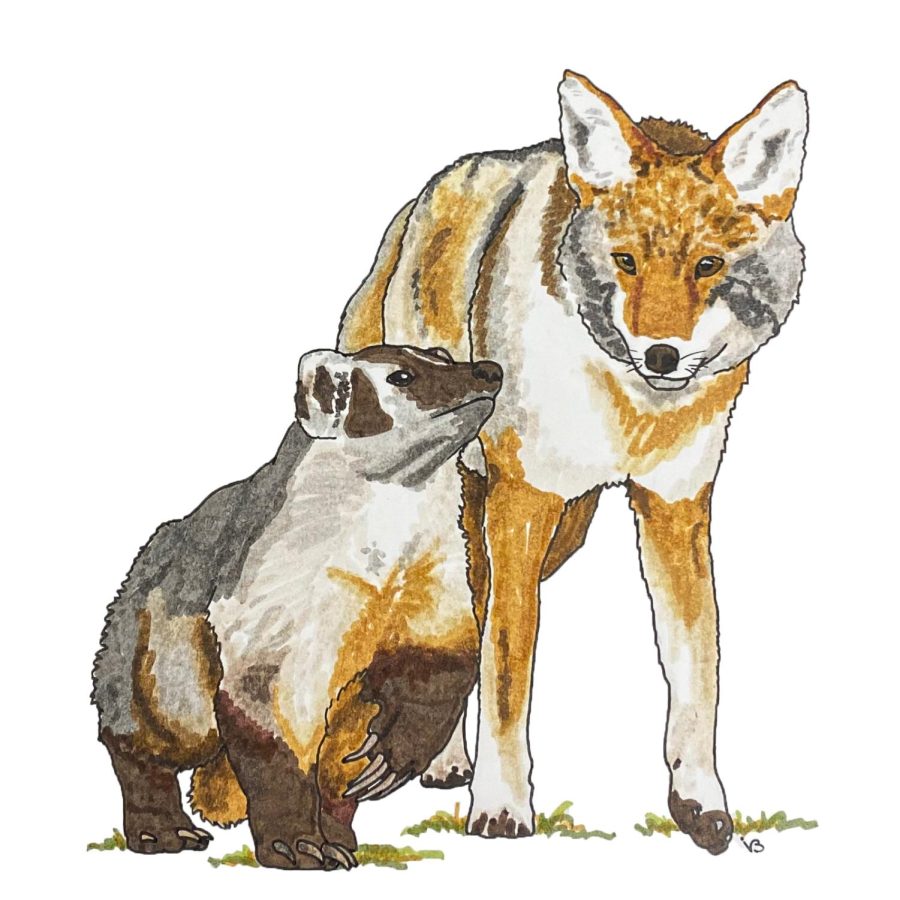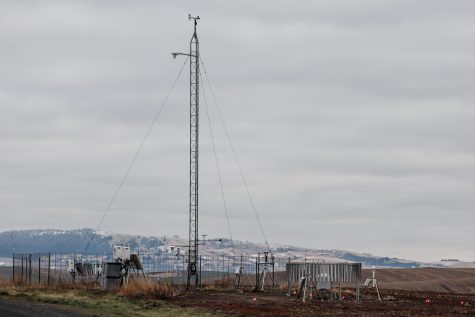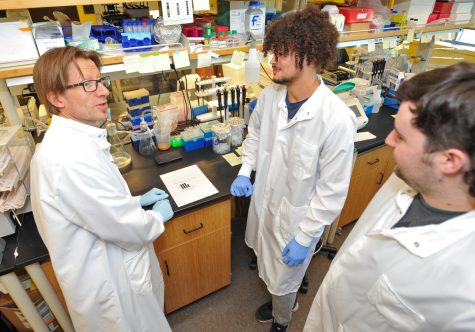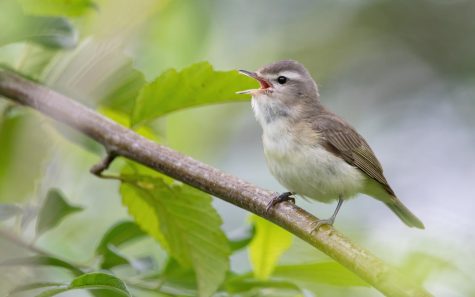The formidable friendship of badgers and coyotes
Cooperation, play potentially related to friendship
The fierce American badger and clever coyote are both native Palouse species.
March 10, 2022
Earlier this month, trail cameras captured photos of a coyote and an American badger hunting together in the Rocky Mountains.
Similar footage has been captured by trail cameras and nature enthusiasts in the past. It raises the question: why do badgers and coyotes hunt together?
The behavior has been observed by Native Americans for centuries. Shoshone legends feature tales of badgers and coyotes working together, according to the Smithsonian Institution.
Coyotes and badgers both hunt small mammals and are native to the Palouse, according to the Washington Department of Fish and Wildlife.
Their favorite critters on the menu are ground squirrels. When threatened by a predator, ground squirrels retreat to their complex burrow systems.
Badgers, however, have a solution. Two-inch claws studding each paw provide superb shoveling skills. Badgers can move a lot of dirt in mere minutes. Researchers from University of Utah caught one burying an entire cow in only five days.
Needless to say, badgers are experts at digging up ground squirrels. The squirrels, however, have another tactic: escaping out the back door! Their burrows have numerous entrances and exits to slip away from badgers. That is where the coyote comes in.
The badger begins to dig up the squirrel burrow while the coyote monitors other exits. If squirrels flee from the badger, they run right into the pouncing paws of the coyote. If they hide underground from the coyote, they remain easy prey for the badger.
Coyotes and badgers have a much greater chance of catching dinner when hunting together, according to research published in the Journal of Mammalogy. Researchers studied the predators in Wyoming and found hunting with a badger increased the chance a coyote caught a squirrel by 34%.
The researchers also noted badgers resurfaced 60% less when hunting with coyotes because they did not need to check other tunnels as often. Coyotes also spent less time stalking and searching. This meant a substantial decrease in energy expenditure for both species.
However, oftentimes only one predator catches a meal, and they have never been observed sharing. Still, the benefits remain plentiful enough to keep cooperation advantageous. But how strong is their relationship?
Badgers and coyotes are often caught on camera traveling together, though they could simply be moving between hunting grounds. But in a San Francisco culvert, more was going on.
In the viral video captured by Peninsula Open Space Trust, a coyote performs a play bow – the same posture domestic dogs assume when playing – in front of the culvert. It then bounds into the culvert and is followed by a badger!
This case of documented play brings evidence for friendship to the table. Are coyotes and badgers more than hunting partners? The Wyoming researchers often witnessed the two species sitting or sleeping together, and even touching noses.
They also recorded recurring partnerships between the same individuals over several weeks. Badgers were equipped with unique radio transmitters, and some coyotes had identifying features, which allowed the researchers to distinguish individuals of each species.
Their findings suggest the species maintain longer-term relationships than previously thought. This provides evidence that individuals recognize each other.
The question remains: tolerant partners or loyal friends? Friendship is often denied in the scientific realm, but today it is being recognized as a valid, natural interaction previously thought to be uniquely human.
In the case of the coyote and the badger, there is plentiful evidence to make a strong case for friendship. Set out a trail camera here or there to see if you can catch some fierce friendship in action.


















